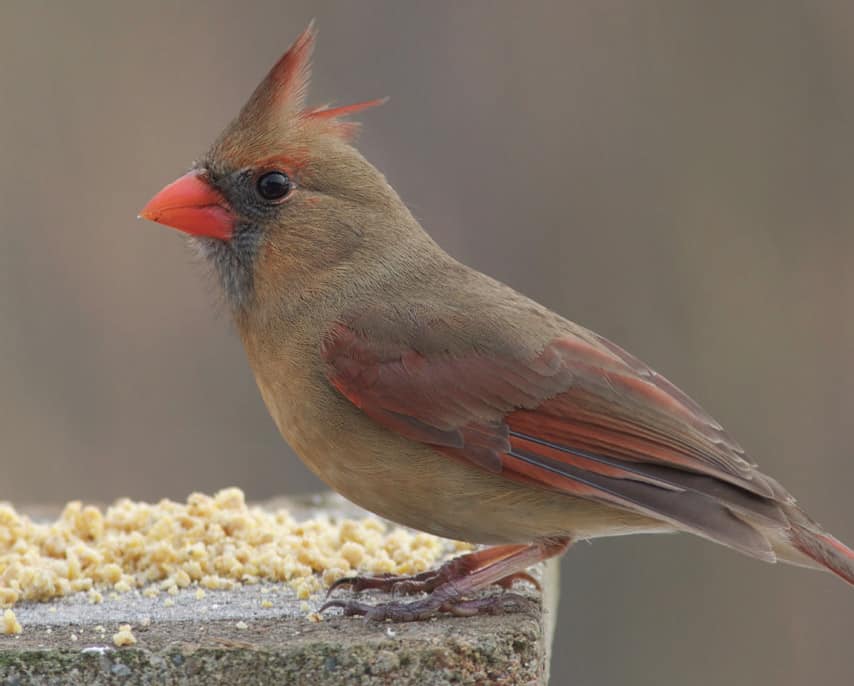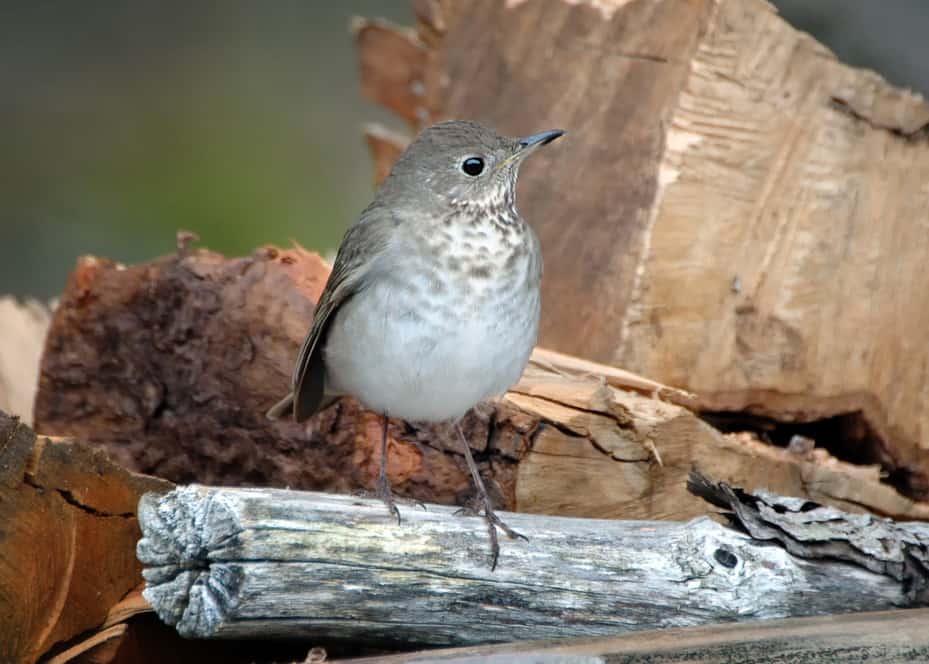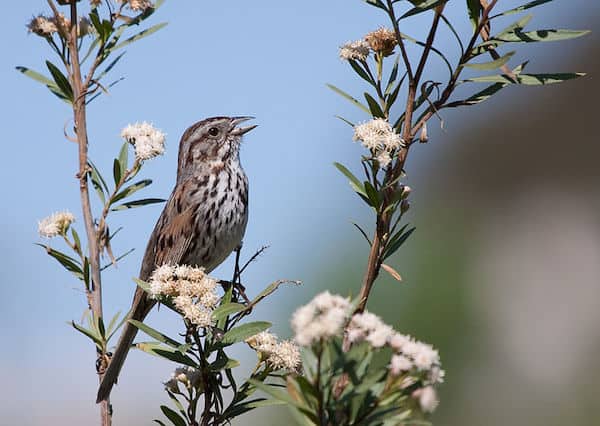I first became aware of the powers of peanut butter suet dough when Carrie Griffis of Port Orchard, Washington, sent us photographs of herself hand-feeding it to a wild adult pileated woodpecker. More than that, he brought his brood to her deck to share it. “This must be some stuff,” I thought. “I’ll try it.” My bird-feeding life has never been the same.
How do I love peanut butter suet dough? Let me count the ways. Coincidentally, there are 10—my Top 10 Reasons to Love Suet Dough.

10. It’s always fresh and homemade. Commercial suet blocks can be too hard for insect-eating birds like bluebirds and creepers to handle. Some have inclusions, like cracked corn, mixed seed, or whole sunflower seeds, that aren’t useful to birds. Homemade suet dough is soft, crumbly, even in texture, and just right for hungry birds to wolf down.
9. It’s easy to make. When bad weather hits, I enjoy whomping up double batches of peanut butter suet dough. The kids help me melt the peanut butter and lard and pour in the dry ingredients. I stir it and let it set, chopping it into chunks. When it’s cool it smells wonderful, almost good enough to eat!
8. It’s easy to store. Lard and peanut butter keep a long time even at room temperature. Though you can refrigerate it or freeze it for longer periods, once the birds catch onto it you’ll find you don’t need to. I store mine in large peanut butter jars, kept in a tole-painted bucket by the front door.
7. It helps birds through severe weather. High in fat and protein, this concoction is the ideal offering for birds like Carolina wrens and bluebirds, insect-eaters that sometimes don’t survive ice storms and deep snow. Warblers and orioles that might linger around feeders take to it readily.
6. Birds can feed it to nestlings when other food is scarce. Prolonged cold rains during nesting season keep insect prey hidden and make it difficult for insect-eating birds to find enough food to keep their young alive. It’s satisfying to see wrens and bluebirds loading up on suet dough for their young in such conditions. (I keep mealworms around for such emergencies, as well).
5. It’s cheaper than offering mealworms. It’s nice to be able to attract bluebirds to your doorstep without spending exorbitant amounts of money on live insect shipments. I use mealworms to attract the bluebirds initially, gradually decreasing the number offered. I mix suet dough in with the mealworms and some gets gobbled down in the feeding frenzy. Sooner or later, still-hungry bluebirds eat the dough in earnest, and the fun and convenience of feeding them suet dough really begins.
4. It’s attractive to unusual birds. For me, the great surprise of feeding suet dough has been the variety of birds it attracts. Here’s the list of species waiting by my doorstep for their dose every morning: eastern bluebird, dark-eyed junco, white-throated sparrow, song sparrow, blue jay, downy woodpecker, white-breasted nuthatch, tufted titmouse, and rufous-sided towhee. They know a good thing when they taste it.
3. It allows you to get to know individual birds. I offer suet dough in small amounts at set times during my day—usually when I’m at the kitchen window preparing meals for my family. The birds listen for the creak of the storm door opening, and flock to a cement bench where I crumble a handful of dough for them. The same individuals show up every time, and I take a lot of pleasure in seeing “my” bluebirds, towhee, and nuthatch show up right on cue.
2. It encourages snobbery in bird feeding. Perhaps I speak only for myself, but I don’t fancy shoveling out premium food for squabbling flocks of starlings. Over the course of a winter I build personal relationships with special birds in the know, birds who are willing to come right to the kitchen window on cue for the good stuff. By putting out only as much as my favorite birds will clean up in 10 minutes and by doing it when I can stand at the window watching them, I discourage the gluttonous but spooky starlings from getting any.
1. It cleans your crusty soup pots. I am not making this up. We’ve all burned beans or chili in our soup pots, and there are some that just won’t scrub clean. Make a batch of suet dough in one of those, stir in the dry ingredients, and you’ll see little black flecks come up with the mixture. Make two or three batches and your pot will sparkle again. The birds won’t mind the flecks—they’re too busy gobbling it down.
Please feed responsibly! Avoid feeding lard-based foods to birds during the warm spring and summer months, when they can find ample and natural sources of nourishment themselves. Birds that gorge on suet and other lard-based recipes run the risk of developing gout. Suet is best served during the winter months, and especially during harsh weather conditions. Read more about health risks to birds on Juile’s blog »
Ready to whip up your own batch of peanut butter suet dough? Visit our DIY section to learn how »




